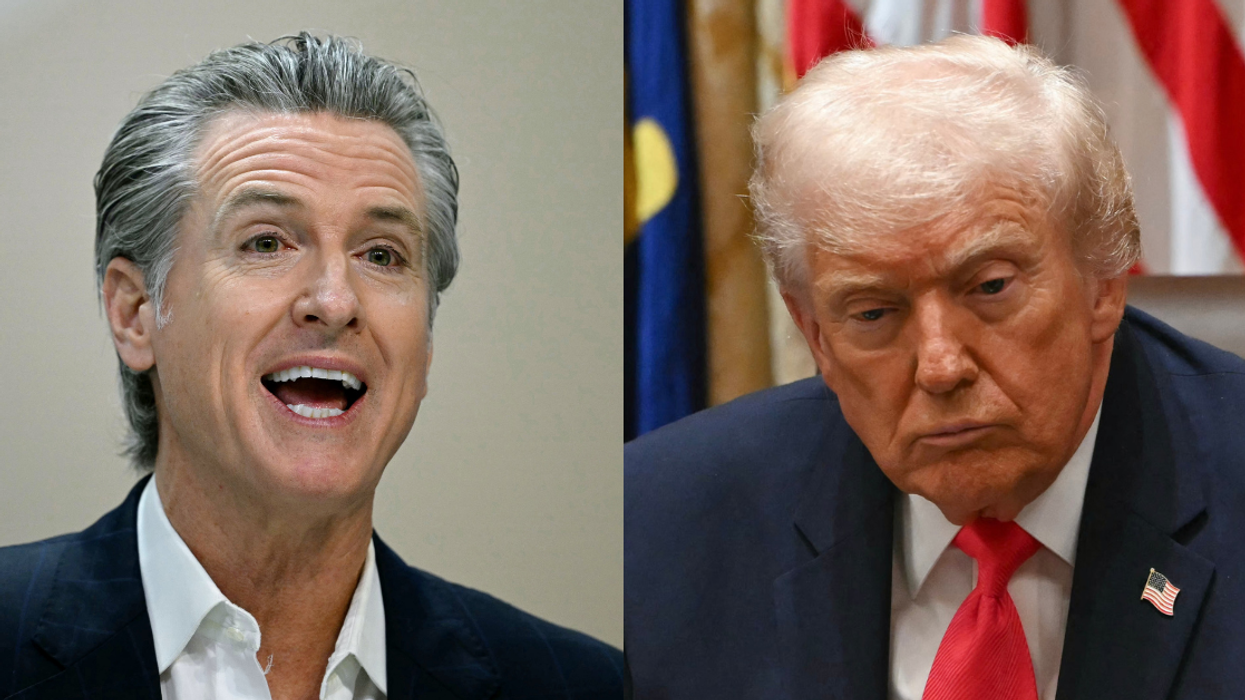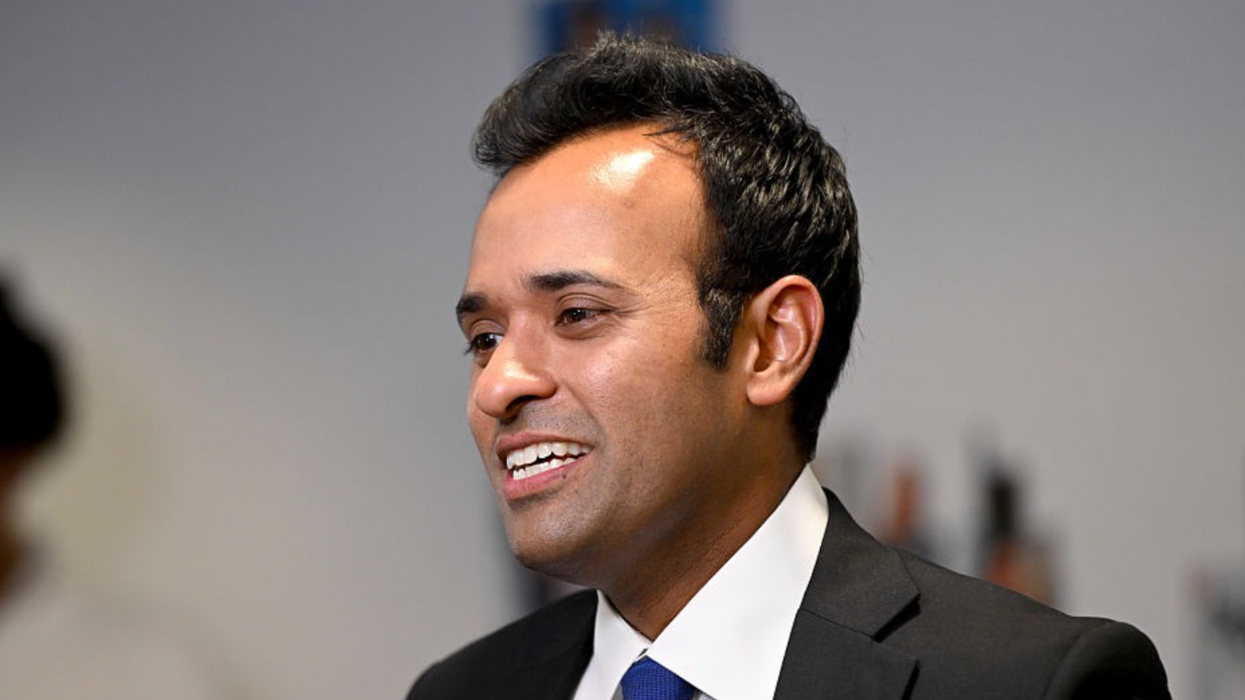Former Supreme Court Justice John Paul Stevens is calling for a full repeal of the Second Amendment as the only viable solution to stopping the mass gun violence that continues to ravage our country.
In an OpEd in Tuesday's New York Times, Stevens, 97, cited the March For Our Lives movement, in which high school students across the country are demanding Congress pass sensible gun control laws aimed at keeping students safe in schools. Stevens is a conservative who was appointed to the bench in by President Gerald Ford in 1975.
The student-led movement began in February after a gunman murdered 17 students and teachers at Marjory Stoneman Douglas High School in Parkland, Florida.
It was this very call to action that inspired Stevens to advise the student activists to aim even higher than gun reform—Stevens thinks they should seek a full repeal of the Second Amendment.
Rarely in my lifetime have I seen the type of civic engagement schoolchildren and their supporters demonstrated in Washington and other major cities throughout the country this past Saturday. These demonstrations demand our respect. They reveal the broad public support for legislation to minimize the risk of mass killings of schoolchildren and others in our society.
That support is a clear sign to lawmakers to enact legislation prohibiting civilian ownership of semiautomatic weapons, increasing the minimum age to buy a gun from 18 to 21 years old, and establishing more comprehensive background checks on all purchasers of firearms. But the demonstrators should seek more effective and more lasting reform. They should demand a repeal of the Second Amendment.
Stevens also opined that fear of standing armies, which led to the adoption of the Second Amendment, is "a relic of the 18th Century."
Concern that a national standing army might pose a threat to the security of the separate states led to the adoption of that amendment, which provides that “a well regulated militia, being necessary to the security of a free state, the right of the people to keep and bear arms, shall not be infringed.” Today that concern is a relic of the 18th century.
While he admitted that for nearly 200 years, no major changes were ever made to the Second Amendment, Stevens cited a 1939 Supreme Court ruling in which justices unanimously decided that the Second Amendment did not apply to owning sawed-off shotguns because "that weapon had no reasonable relation to the preservation or efficiency of a 'well-regulated militia.'"
During his time on the bench, Stevens recalled no judge "federal or state, as far as I am aware, expressed any doubt as to the limited coverage of that amendment."
But that changed when the National Rifle Association began mounting public campaigns in which the nation's largest gun lobby claimed any regulations on firearms violated citizens' Second Amendment rights.
Chief Justice Burger publicly characterized the N.R.A. as perpetrating “one of the greatest pieces of fraud, I repeat the word fraud, on the American public by special interest groups that I have ever seen in my lifetime.”
In 2008, the Supreme Court ruled in D.C versus Heller that the Second Amendment unequivocally guarantees the right to bear arms without the need for service in a militia, and that this right extends to defense of the home.
Additionally, the Court ruled that Washington D.C.'s handgun ban and a law requiring rifles and shotguns to be stored unloaded also violated the Second Amendment.
Stevens added that D.C. versus Heller "has provided the N.R.A. with a propaganda weapon of immense power."
Overturning that decision via a constitutional amendment to get rid of the Second Amendment would be simple and would do more to weaken the N.R.A.’s ability to stymie legislative debate and block constructive gun control legislation than any other available option.
Stevens concludes that the only viable option to guarantee the safety of children in schools is a full repeal of the Second Amendment, as curbing NRA power is the biggest hurdle gun control activists continue to face.
That simple but dramatic action would move Saturday’s marchers closer to their objective than any other possible reform. It would eliminate the only legal rule that protects sellers of firearms in the United States — unlike every other market in the world. It would make our schoolchildren safer than they have been since 2008 and honor the memories of the many, indeed far too many, victims of recent gun violence.













 @martymcflizzy1/TikTok
@martymcflizzy1/TikTok @martymcflizzy1/TikTok
@martymcflizzy1/TikTok @martymcflizzy1/TikTok
@martymcflizzy1/TikTok @martymcflizzy1/TikTok
@martymcflizzy1/TikTok @martymcflizzy1/TikTok
@martymcflizzy1/TikTok @martymcflizzy1/TikTok
@martymcflizzy1/TikTok @martymcflizzy1/TikTok
@martymcflizzy1/TikTok @martymcflizzy1/TikTok
@martymcflizzy1/TikTok @martymcflizzy1/TikTok
@martymcflizzy1/TikTok @martymcflizzy1/TikTok
@martymcflizzy1/TikTok @martymcflizzy1/TikTok
@martymcflizzy1/TikTok @Kaimandante/Twitter (X)
@Kaimandante/Twitter (X)
 @PeteHegseth/X
@PeteHegseth/X @GovPressOffice/X
@GovPressOffice/X @chessclubgringo/X
@chessclubgringo/X @oelayat/X
@oelayat/X @PlowOn/X
@PlowOn/X @Azgal43026529/X
@Azgal43026529/X @chessclubgringo/X
@chessclubgringo/X
